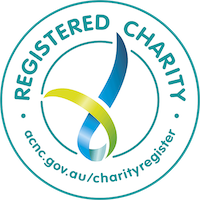The rental affordability situation in regional Victoria has reached crisis point, with Melbourne residents relocating after the COVID-19 lockdown, according to Anglicare Australia’s 2021 Rental Affordability Snapshot.
The snapshot analysed 33,710 Victorian rental listings from 27 March 2021, finding that less than half the number of rental properties were available in regional Victoria compared to the same time last year. Fewer than 10 per cent of these were suitable for any type of low income household without putting them into housing stress.
Anglicare Victoria CEO Paul McDonald said rental affordability continues to drift out of reach of our lowest income earners.
“Real action is needed from the Morrison Government to address the affordable housing crisis in Australia. Federal policy intervention such as a national affordable housing strategy or summit is becoming critical,” Mr McDonald said.
“This research shows that many families on low incomes have been left high and dry as rents in the regions ratchet up, driven by the competition from those moving out of Melbourne. Only 2 per cent of the available rentals are suitable for those on income support without sending them into housing stress or overcrowding.
“Along with the demise of affordable housing in the regions, landlords in many areas are taking their homes out of the rental market and putting them on Airbnb to take advantage of the boom in domestic holidaymaking.
“When it comes to the city, the exodus to regional Victoria and a lack of international students has led to a rise in the availability of CBD and near-city rentals. However there are very few properties that are affordable for those at the lower end of the market.
“When the snapshot was taken on Saturday 27 March, only 15 of Victoria’s 48 regional local government areas had rental properties available. The situation is very bad for many, and is worse in 2021 for most groups compared to the year before.
“The Andrews Government’s Big Housing Build and other state initiatives announced during the pandemic will be positive for those at risk of homelessness, fleeing family violence or with mental health issues. But with the Federal Government’s National Rental Affordability Scheme winding down, it’s clear that something else is needed at the Commonwealth level to give a boost to our most vulnerable as rents spiral out of control,” he said.
The headline trends from the 2021 Rental Affordability Snapshot are as follows:
- About 2 per cent (746) of listings were suitable for at least one type of household on income support without placing them into housing stress.
- City dwellers flee to the regions after COVID. Many of those previously living close to the CBD made for the countryside when Melbourne’s second lockdown lifted in 2020. This move massively increased competition for rental properties across the state, making many regional towns much less affordable – particularly for those on minimum wage and income support.
- Sharp fall in regional listings, rise in available CBD properties. The overall number of rental listings increased to 33,710 from 19,435 in 2020. Only 1422 of these listings were in regional Victoria, less than half the figure from 2020. The 9261 rental listings available in the CBD were more than 2.5 times last year’s total of 3320, but very few of these were affordable for low income earners.
- The average weekly rent in the regions ($370) is now close to what it is in Melbourne ($395). This compares to average weekly rent of $350 in regional Victoria a year ago.
- 18 per cent of properties (6091) were suitable for at least one household type living on minimum wage.
- Only 0.2 per cent (53) of the listings were suitable for a couple with two young children getting by on JobSeeker.
- Single people (with and without children) on income support or pension continue to be the most disadvantaged group. Very few of the properties were affordable and appropriate for these groups.
- Most types of households are worse off in 2021 compared to last year. There was a marginal improvement for singles and couples on the Age pension (0.1 per cent) and for singles on the disability support pension (0.2 per cent).
- Regional landlords warm to domestic tourism. With international holidays not currently an option, Australians are holidaying in regional areas of the country. Some landlords have turned to Airbnb to take advantage of this increased demand for accommodation, reducing the supply of available rentals for lease.
Options to address the situation include a rise to income support payments beyond the $25/fortnight announced in 2021, improved mental health and family violence support, Commonwealth rent assistance and innovative funding models such as social impact bonds.
The 2021 Victorian Rental Affordability Snapshot is available from the Anglicare Victoria website.
For an interview or photo opportunity with Anglicare Victoria CEO Paul McDonald, please contact: Mark Bretherton, Anglicare Victoria Media and Advocacy Manager on 0439 806 072 or mark.bretherton@anglicarevic.org.au.
Note to Editors: Anglicare Victoria is the state’s leading agency in delivering out-of-home care and family support to vulnerable children, young people and families. Please note – children in care cannot be photographed


